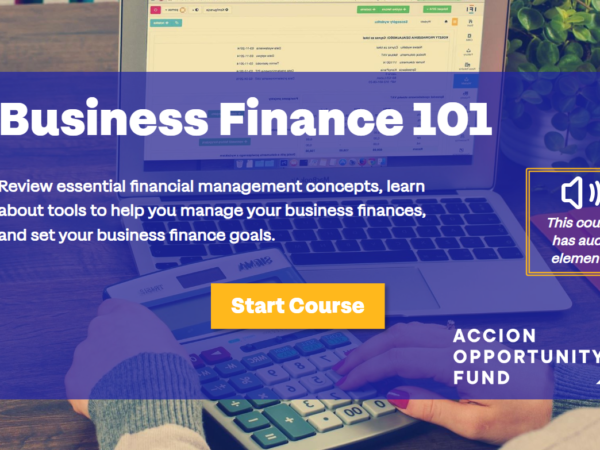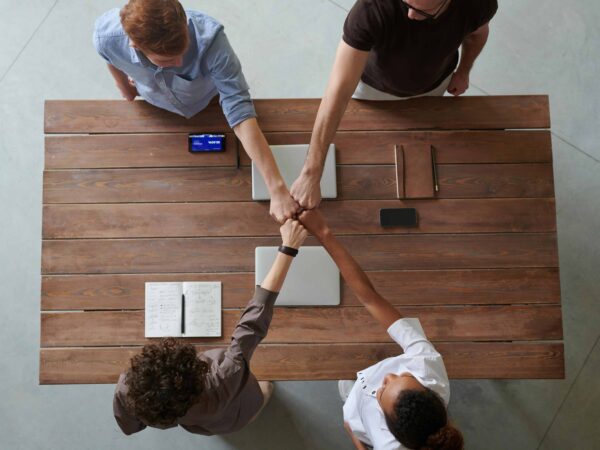The Alternative Lending Landscape
Compare different types of small business alternative lending options. Compare microloans, peer-to-peer, online loans, and payday loans.

Many entrepreneurs get to the stage where they need financing to move their businesses forward. Some may head to their local banks to apply for a loan, but small business owners’ applications are frequently denied by traditional banks. That’s where alternative lending comes in.
There’s a myriad of reasons why a small business’s loan application could be denied by a bank. Maybe you have bad credit. Perhaps your industry conditions have taken a turn for the worse and your bank doesn’t want to incur the risk in case you default. It’s possible the amount of money you want to borrow is considered too small for the bank to dedicate the underwriting resources.
There are now plenty of alternatives for financing a business that don’t involve a traditional bank that range from online lenders, to nonprofit organizations that provide small business loans. Each type of loan has its benefits and drawbacks, with some making more sense than others to different businesses at different times.
It’s possible for business owners to shop around for the best APR, term, fees, the time to process your application, and, if necessary, to look for looser approval standards. Let’s take a look at the alternative lending landscape and find out what option would be best for your business.
What Are Payday Loans?
You may be familiar with payday loans as check cashing loans. A payday loan is a small sum of cash loaned to a borrower at a high interest rate with the understanding the borrower will pay the loan back upon receiving their next paycheck. Generally, payday loan customers are in a cash crunch to meet their everyday living expenses. For people who need a small amount of cash quickly, payday loans are a fast, although expensive, solution.
The regulations governing these loans say you have to be employed or have a steady source of income. You’re also required to have a government-issued photo ID, a checking account, and proof of address. However, this isn’t necessarily the case with online payday lenders. National Public Radio’s Pam Fessler reported she was approved for a loan of $750 when she applied using a payday lender’s web site using a fake name, Social Security number, and bank account information. The loan carried an APR of 1300%.
Payday loans aren’t marketed to small business owners. Payday loans generally carry fees or interest rates in the neighborhood of 15%. A 15% rate (or a $15 fee) on a $100 two-week loan adds up to an APR of 390% when calculated over the year.
Because many payday borrowers have wound up living not just from paycheck to paycheck, but from loan to loan, 14 states and the District of Columbia have outlawed payday loans.
While check cashing storefronts still abound, high numbers of these loans are now done online. There are online alternatives besides payday lenders, especially for small business loans.
What are Cash Flow Loans?
With cash flow financing, you’re basically borrowing against money you expect to receive in the future. A cash flow lender will make the decision about whether or not to approve you for a loan based on your sales projections and your business’s past performance.
In order to determine if you qualify for a cash flow loan, rather than looking at traditional factors like the health of your industry or your business assets, cash flow lenders concentrate almost exclusively on your cash flow. In order to accurately assess the cash flow of your business, a cash flow lender will analyze income projections as well as the past performance of your business. To do this, cash flow lenders use computer algorithms that factor in data such as transaction frequency and volume.
Cash flow loans can be repaid two different ways. After the borrower is given a lump sum of cash, with some cash flow loans, the lender will receive a percentage of your sales until the loan is paid off. A payment might be taken directly from your bank account every day or several times a week. To repay other cash flow lenders, you pay a fixed dollar amount in installments over a predetermined length of time.
Bloomberg Businessweek reports the average APR of cash flow lender OnDeck was 54%, as opposed to 7 – 9% APR charged by banks and 10 – 20% APR charged by reputable microlenders.
If you opt for a cash flow loan, read the fine print. Many come with high fees and prepayment penalties. Most cash flow lenders charge an origination fee of about 2.5% the loan amount, plus high fines for late payments or insufficient funds to cover a scheduled payment. If you default on your loan, a cash flow lender might put a lien on your business, which means they could take your business from you in order to recover the money you owe.
What Are Merchant Cash Advances?
The second type of online loan is called a merchant cash advance. Merchant cash advances are similar to cash flow loans in that you get money in exchange for a portion of your future profits. In the instance of a merchant cash advance, these profits are a percentage of your business’s daily credit and debit card transaction income.
In some cases, a merchant cash advance company takes your loan repayment, which includes principal, interest, and fees, directly from the processor that handles credit card transactions for your business. In other cases, you allow the merchant cash advance company to link to your bank account in order to collect their funds.
Some merchant cash advance companies will give you a short term in which they need to be paid back; others will collect the agreed-upon percentage of your sales until your loan balance is repaid.
Merchant cash advances companies are largely unregulated and unbound by state usury laws that limit lenders from charging much higher fees and interest rates than banks. This means it’s a good idea to do the math and calculate the APR rather than just accepting the advertised interest rate on a merchant cash advance without considering the terms and fees that might be hidden in the fine print.
What Are Microloans?
allow business owners to borrow relatively small amounts of money, usually less than $50,000, to help start or grow small businesses. Sole proprietorships and businesses with a small number of employees-such as online businesses or those that operate out of a home or a storefront-can find it very difficult to secure traditional bank financing and thus are good candidates for microloans.
A microloan allows these business owners to borrow small amounts of cash, around $13,000 on average. Like traditional loans, microloans are usually payable in equal monthly installments.
Non-profit microlenders offer other benefits to clients in addition to loans, such as education and training. A loan officer might provide help with business and marketing plans or other small business concerns.
Like alternative lenders, microlenders generally require less documentation and are more flexible with their underwriting criteria than traditional banks. Accion Opportunity Fund’s underwriters in particular look at the whole story of a business when making the decision to approve or deny a loan candidate, rather than relying solely on the numbers.
While interest rates on microloans are higher than traditional banks loans, microlenders’ interest rates tend to be lower than the APRs of some other alternative types of financing, like online loans.
You don’t always need a Social Security Number to get a loan. Some lenders, like Accion Opportunity Fund, offer loans to individuals with ITIN (Individual Taxpayer Identification Number).
What Are Peer-to-Peer Loans?
Peer-to-Peer (P2P) lenders offer online platforms that promise to connect businesses and people in need of financing with individual and institutional investors who are willing to provide it. These P2P lending platforms make money by charging borrowers an origination fee to participate and charging a service fee to investors.
A borrower repays their loan plus interest to their investor. As with traditional bank loans and microloans, P2P loan payments are fixed and made monthly. There are usually no prepayment penalties.
The typical P2P lending process involves a short online borrower application and a few days between approval and receiving the funds.During the loan application process, a borrower’s application is analyzed and then presented to potential investors. To determine the interest rate on the loan, the borrower’s credit rating is usually the biggest determining factor, with those judged as greater risks being charged higher rates. A potential lender can also bid for a loan at whatever interest rate he or she wants to charge.
P2P loans have a broad range of interest rates. For borrowers with good credit, rates can be as low as 5.9%. For higher risk clients, interest rates can be as high as about 35%, while some borrowers won’t find any lenders willing to invest.
Companies such as Lending Club and Prosper, which account for 98% of today’s P2P borrowing, run online credit marketplaces that match borrowers with investors. P2P loans are primarily used by individuals and established entrepreneurs. There are some P2P firms, however, that specialize in small business, such as FundingCircle.
Finance Your Business for Growth
As you can imagine, small business owners and entrepreneurs are benefiting from the recent growth of this broad range of financing options for small businesses. Every business owner must do the research and make a careful decision after weighing the options. Financing can provide a great opportunity for growth, as long as the choice is made wisely.
If a small business loan is right for you and your business, click here to explore AOF’s small business loans.












